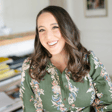
Episode 219 - How to Build and Sell Showit Websites
Lately we’ve been receiving a lot of questions about designing and selling Showit templates, so I roped Krista into doing a quick, 20 minute, q+a style podcast episode with me while I asked her some of the questions.
If you’re thinking about becoming a designer or if you’re already a designer and you want to start designing and selling Showit website templates, this is a great place to start. We cover what you need to get started, helpful Showit resources, our favorite ecommerce platforms for actually selling templates, where Krista designs templates and some of her favorite design related tools, and what kinds of support we offer for template sales.
As always, links and resources can be found in the show notes. Check ’em out at https://daveyandkrista.com/how-to-build-and-sell-showit-websites/. And if you enjoyed this episode, please consider leaving a review over at Apple Podcasts.
















